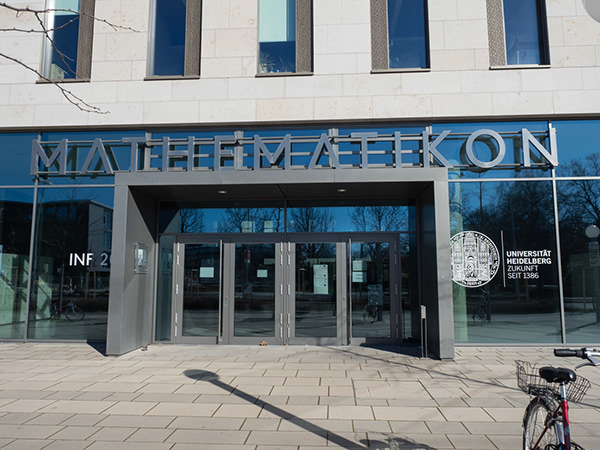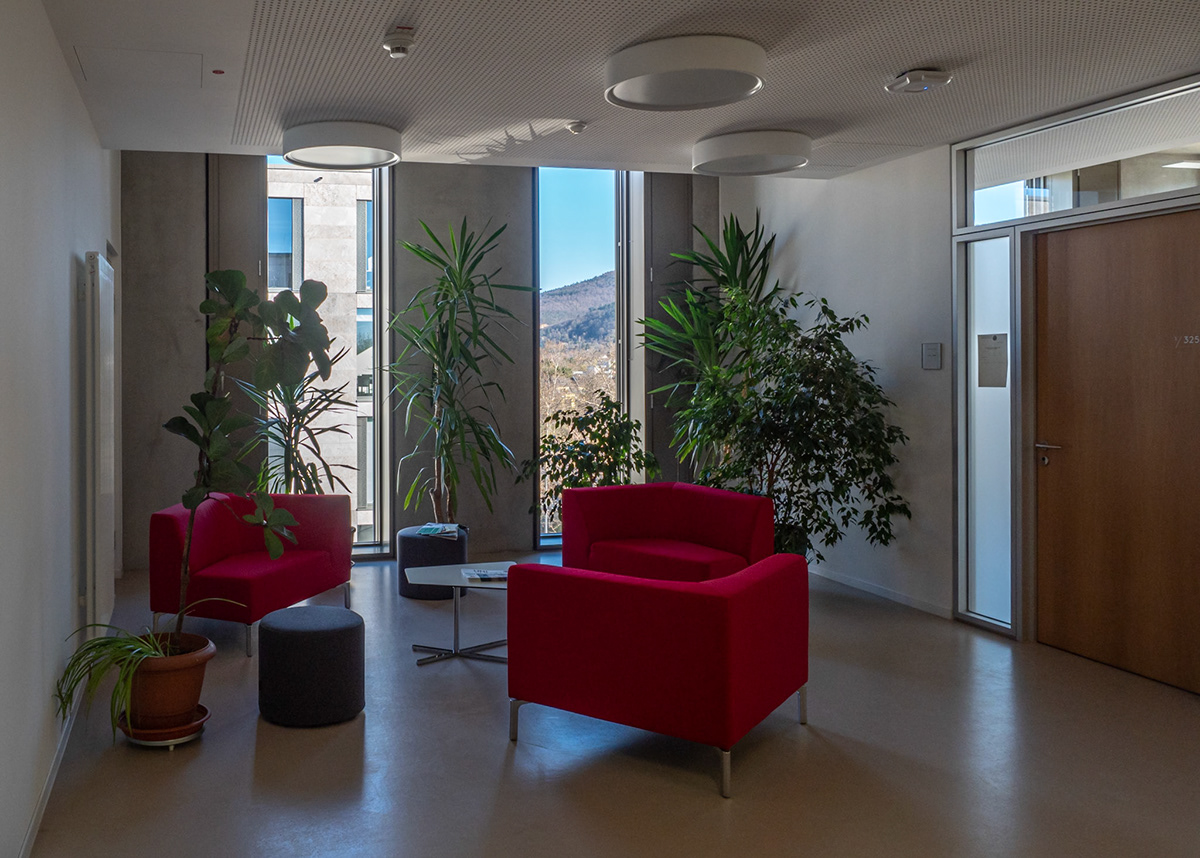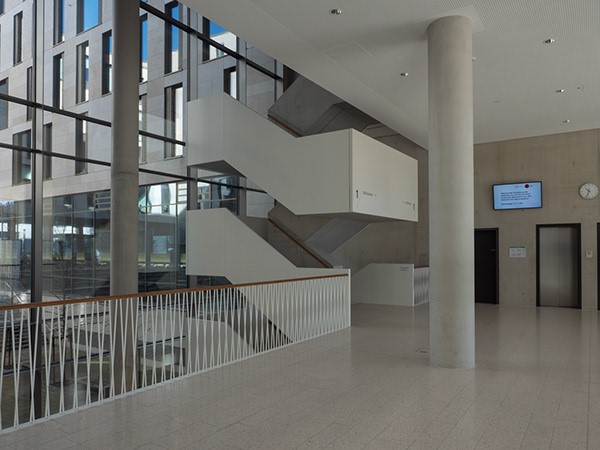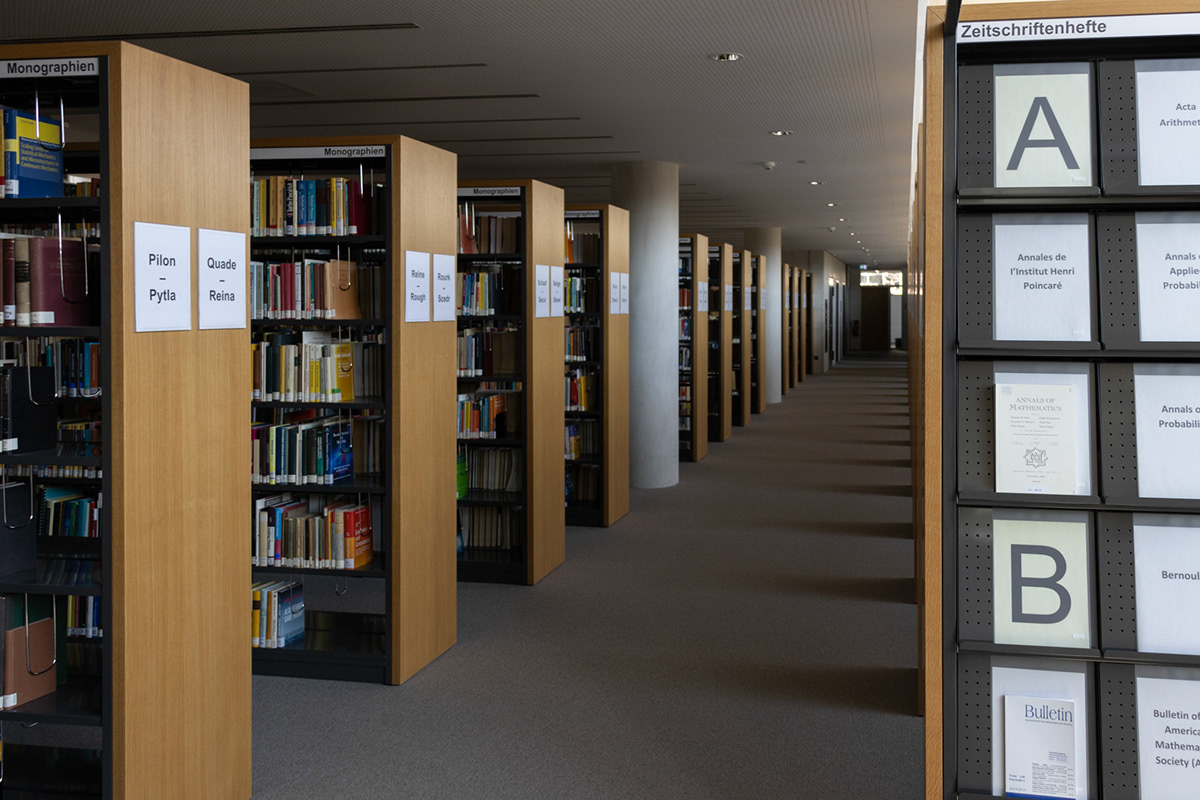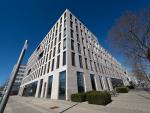
Mathematikon
of mathematical things, recalling their central importance for all scientific disciplines and society as a whole.
The Mathematikon was built in 2015 by the Klaus Tschira Foundation. The northern parts of the building integrate gastronomy and retail on the first floor and offer space for university and university-related tenants on the upper floors. The southern Bauteil A
was donated to the state of Baden-Württemberg and houses the research and operational facilities of the Faculty of Mathematics and Computer Science together with the Interdisciplinary Center for Scientific Computing since 2016.
Virtual Tour
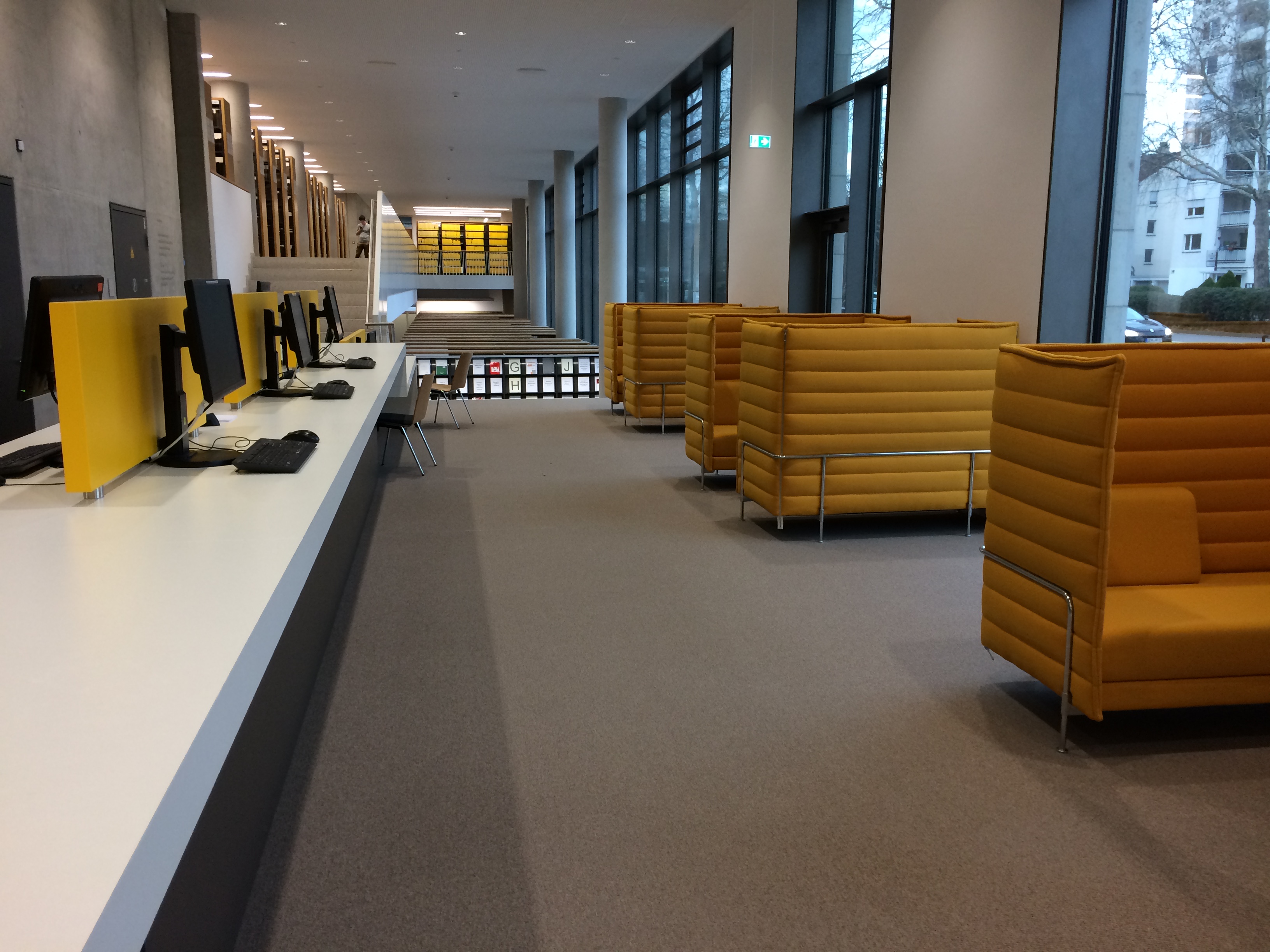
Approaching the main entrance of the MATHEMATIKON from the south in the direction of the Neckar river, you first enter the foyer, where frequently changing exhibitions can be seen.
To the left are the large seminar rooms A, B, and C, as well as the lecture hall at the very end of the hallway. This is typically where larger lectures and colloquia are held, as well as public lectures and smaller conferences. To the right is the Faculty Library with its extensive reference collection and many quiet workspaces that also offer electronic ports for students' own laptops. Small secluded séparées can be reserved for intensive work by appointment. At the back of the library, the collected Lecture Notes of the Springer Verlag, edited by Albrecht Dold (1928 - 2011) from 1964 to 2000, fill several shelf meters.
Behind the building is an adjacent courtyard, which offers a covered area for bicycles in the back. It extends down to the atrium with wide steps, offering the possibility of using the courtyard as a backdrop and stage for concerts and the like. Two laboratories are also located in the basement.

A characteristic of the building's room layout is the joint use of each floor by the Faculty of Mathematics and Computer Science with the working groups of the Interdisciplinary Center for Scientific Computing. They are distributed in opposite directions and alternately on the western and eastern wings.
From the foyer, elevators or the stairways lead to the second floor with the dean's office and the faculty secretariats. There are student lounge areas on each floor, which are well appreciated. Meeting rooms for small groups can be reserved at any time. Smaller seminar rooms with approximately 20 seats are spread out on the upper floors.
On the top floor is the conference room, which is used for representative purposes as well as for colloquia and smaller conferences. The replica of the Heidelberg Vaugondy globe from 1751 and a metal model of a Sierpinski tetrahedron are also displayed here. In the eastern wing is the common room, through which you can access the roof terrace, with a beautiful view all the way to Heidelberg Castle. Here, graduation parties, conference dinners and celebrations of other occasions take place, which have to be announced, but - and this is another special feature - the room cannot be reserved in the sense of a closed event but is open to all employees of the building at any time.
Art in and around the building
Mathematical Collection
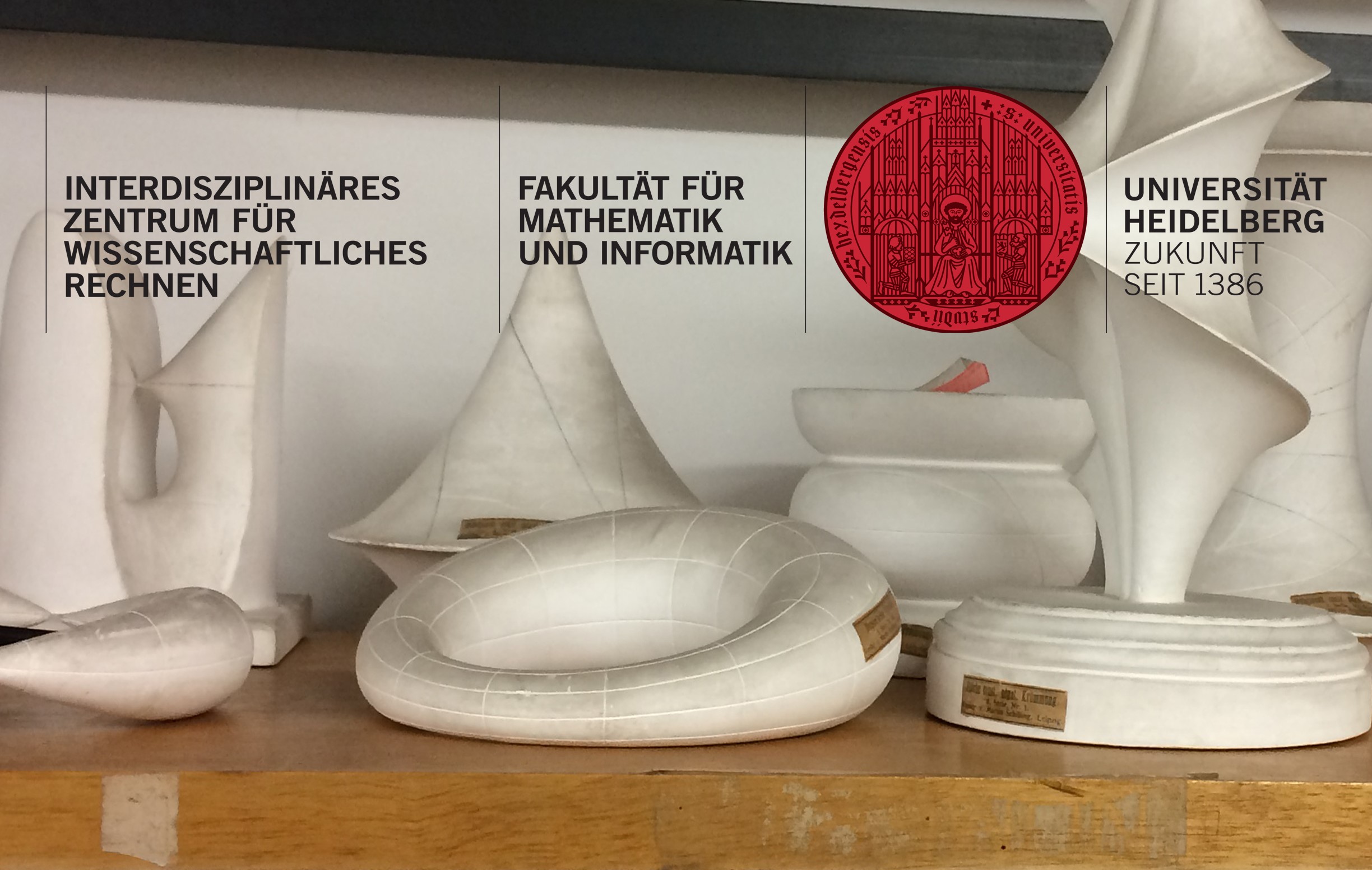
The extensive collection of the Mathematical Institute comprises a total of 79 objects, 46 of which are plaster objects of the Schilling series. The rest are mostly brass, cardboard, wood or thread models. Also belonging to the faculty is a painting by Adelheid Furtwängler depicting Heinrich Liebmann (1874 - 1939, Dean of the Faculty of Mathematics and Natural Sciences and Rector of Heidelberg University).
The bronze plaque of Leo Koenigsberger (1837 - 1921), which was mounted by his students on the former Mathematical Institute in the Hauptstrasse and was long considered lost, is also in the possession of the Institute.
The collection is currently deserted, but there are plans for a public presentation on the premises of the faculty.


